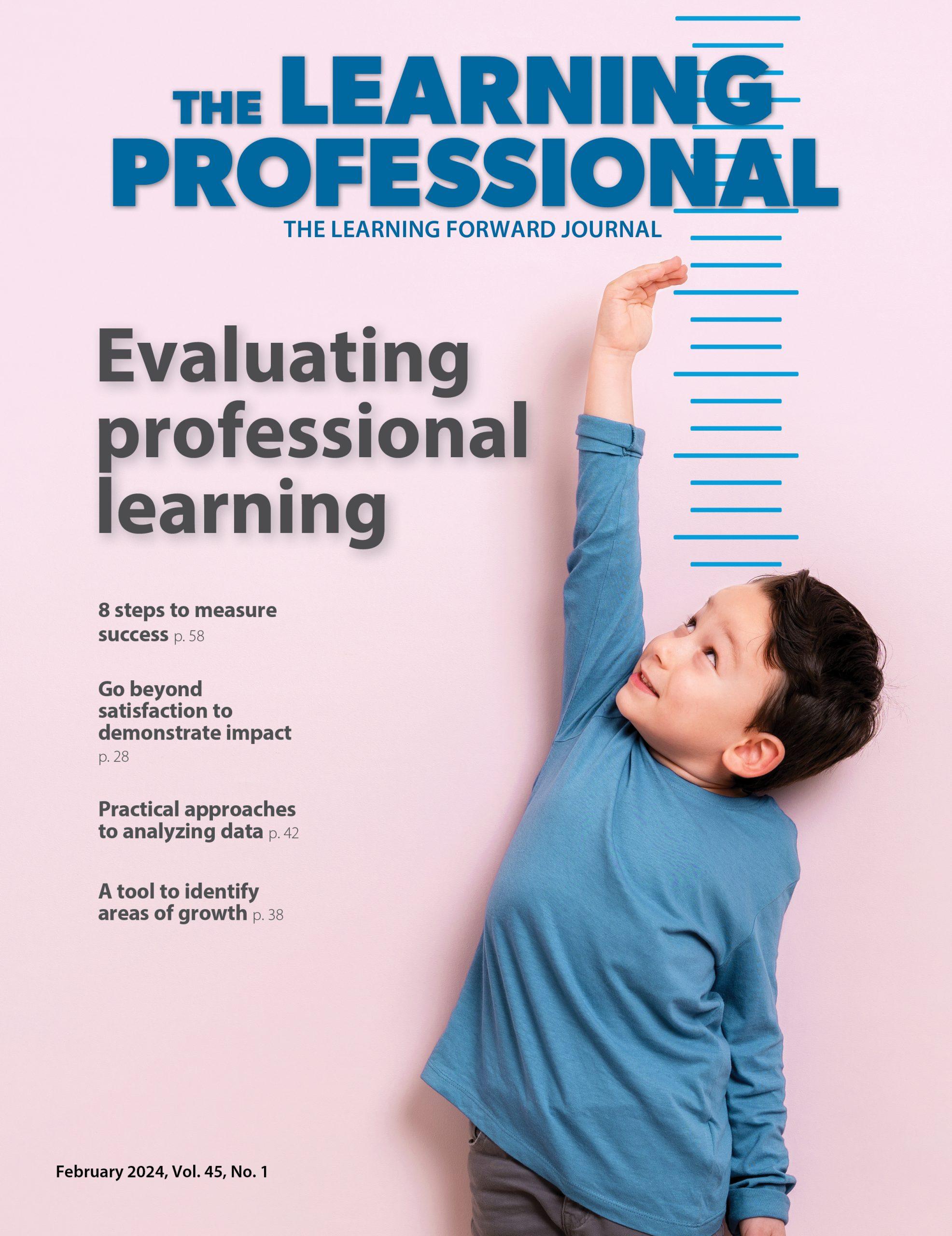Complete The Picture
Evaluation fills in the missing pieces that feedback can't provide
By Learning Forward
October 2013
Read the remaining content with membership access. Join or log in below to continue.
Sed ut perspiciatis unde omnis iste natus error sit voluptatem accusantium doloremque laudantium, totam rem aperiam, eaque ipsa quae ab illo inventore veritatis et quasi architecto beatae vitae dicta sunt explicabo. Nemo enim ipsam voluptatem quia voluptas sit aspernatur aut odit aut fugit, sed quia consequuntur magni dolores eos qui ratione voluptatem sequi nesciunt. Neque porro quisquam est, qui dolorem ipsum quia dolor sit amet, consectetur, adipisci velit, sed quia non numquam eius modi tempora incidunt ut labore et dolore magnam aliquam quaerat voluptatem.
Sample Feedback Form
At the conclusion of this seminar, I ask that you provide feedback to assist me in planning future professional learning. Often, seminar participants are asked to fill out an evaluation of the experience in order to assist administrators in decision making. Feedback, however, is different. It is to help me improve my seminars. Thanks.
1. What was the most helpful to you?
2. Did you notice any written or spoken factual errors? If so, what were they?
3. This seminar is designed to blend theory, practical advice, application, practice, and activity. Was the seminar balanced? Were there times when you were completely lost or bored? If so, when?
4. What one concept or idea was the most provocative?
5. What activity was the least helpful to you?
6. How committed are you to beginning the LtoJ process in your district, school, or classroom? If highly committed, where will you begin?
7. Where are you on this scale?
confusion__________________________________Clarity
8. How did I do in these four essential elements of successful seminars? (5 is highest, 1 is lowest score.) Place an X on each line.
Providing humor. 1_____________________5
Speaking to your heart. 1_____________________5
Giving you hope. 1_____________________5
Providing enough help. 1_____________________5
Source: Lee Jenkins.
Professional Learning Communities Process and Instructional Framework: Hastings Public Schools
- The foundation of learning team work is the pursuit of real answers to four critical questions:
- What do we want students to know and be able to do? (Essentials)
- How will we know when students know or can do it? (Common assessment)
- What will we do when students don’t know it? (Unit of study/differentiation/intervention)
- What will we do when students already know it? (Unit of study/differentiation)
- An essential is that which a student should know or be able to do at the end of each course or grade level.
- Eight to 10 essentials are held in common and addressed by all teachers at that grade or content level.
- Essentials should reflect, to the greatest degree appropriate, 21st-century learning, rigor/relevance, Common Core, district curriculum expectations, state standards, and other curricular content or skills thought essential.
- An assessment is a method of determining student learning. Examples include paper/pencil, performance-based, teacher observation, checklist, etc.
- Formative assessments (informative), also known as assessments for learning, are ultimately given to direct future content and instruction.
- Using data involves making instructional decisions to improve student learning and/or measure one’s overall impact.
- Formative assessments guide the development of units of study that should include differentiation or a system of interventions.
- Summative assessments (summary), also known as assessments of learning, are given at the end of instruction to measure student learning. They are also used as program measures to determine what did and did not work.
- There are five kinds of learning targets: knowledge, reasoning, skill, product, and disposition.
- Knowledge targets tend to be factual and often include verbs such as know, list, name, identify, recall, etc.
- Reasoning targets tend to involve the application of content to the real world and often include verbs such as predict, infer, classify, hypothesize, compare, conclude, summarize, analyze, evaluate, generalize, etc.
- Skills targets are those performances that must be demonstrated and observed (heard or seen).
- Product targets call for a student to create a product.
- Types of evidence include teacher observation, selected response, extended written response, and performance assessment.
- The type of evidence selected must match the kind of target desired.
- The tool for gathering evidence must match the type of evidence and kind of target.
- There are three stages to instructional (backward) design: Identify desired results, determine evidence, and plan learning experiences and instruction.
- Robert J. Marzano’s The Art and Science of Teaching (ASCD, 2007) is our instructional framework.
- Our instructional framework is organized around nine plus one Design Questions from Marzano’s The Art and Science of Teaching (ASCD, 2007).
- Hastings Public Schools is focused on Design Questions One (Expectations) and Five (Engagement) for 2012-13 from Marzano’s The Art and Science of Teaching (ASCD, 2007).
- Specific actions that teachers can take for Design Question One (Expectations) include: Distinguish between learning goals and activities; write a rubric or scale for each learning goal; have students identify their own learning goals; assess students using formative assessment; have students chart their progress on each learning goal; and recognize and celebrate growth.
- Specific actions that teachers can take for Design Question Five (Engagement) include: Games, goal setting, think time, physical activity, exit cards, authentic engagement, pacing, and relationship building.
Source: Hastings Public Schools.
Feedback and Evaluation Resources
Blanchard, K., Meyer, P. J., & Ruhe, D. (2007). Know can do! Put your know-how into action. San Francisco, CA: Berrett-Koehler.
Deming, W.E. (2000). Out of the crisis. Cambridge, MA: The MIT Press.
Jenkins, L. (2005). Permission to forget: And nine other root causes of America’s frustration with education. Milwaukee, WI: ASQ Quality Press.
Learning Forward. (2011). Standards for Professional Learning. Oxford, OH: Author.
Sample LtoJ Chart

Learning Forward is the only professional association devoted exclusively to those who work in educator professional development. We help our members plan, implement, and measure high-quality professional learning so they can achieve success with their systems, schools, and students.
Recent Issues
LEARNING TO PIVOT
August 2024
Sometimes new information and situations call for major change. This issue...
GLOBAL PERSPECTIVES
June 2024
What does professional learning look like around the world? This issue...
WHERE TECHNOLOGY CAN TAKE US
April 2024
Technology is both a topic and a tool for professional learning. This...
EVALUATING PROFESSIONAL LEARNING
February 2024
How do you know your professional learning is working? This issue digs...








